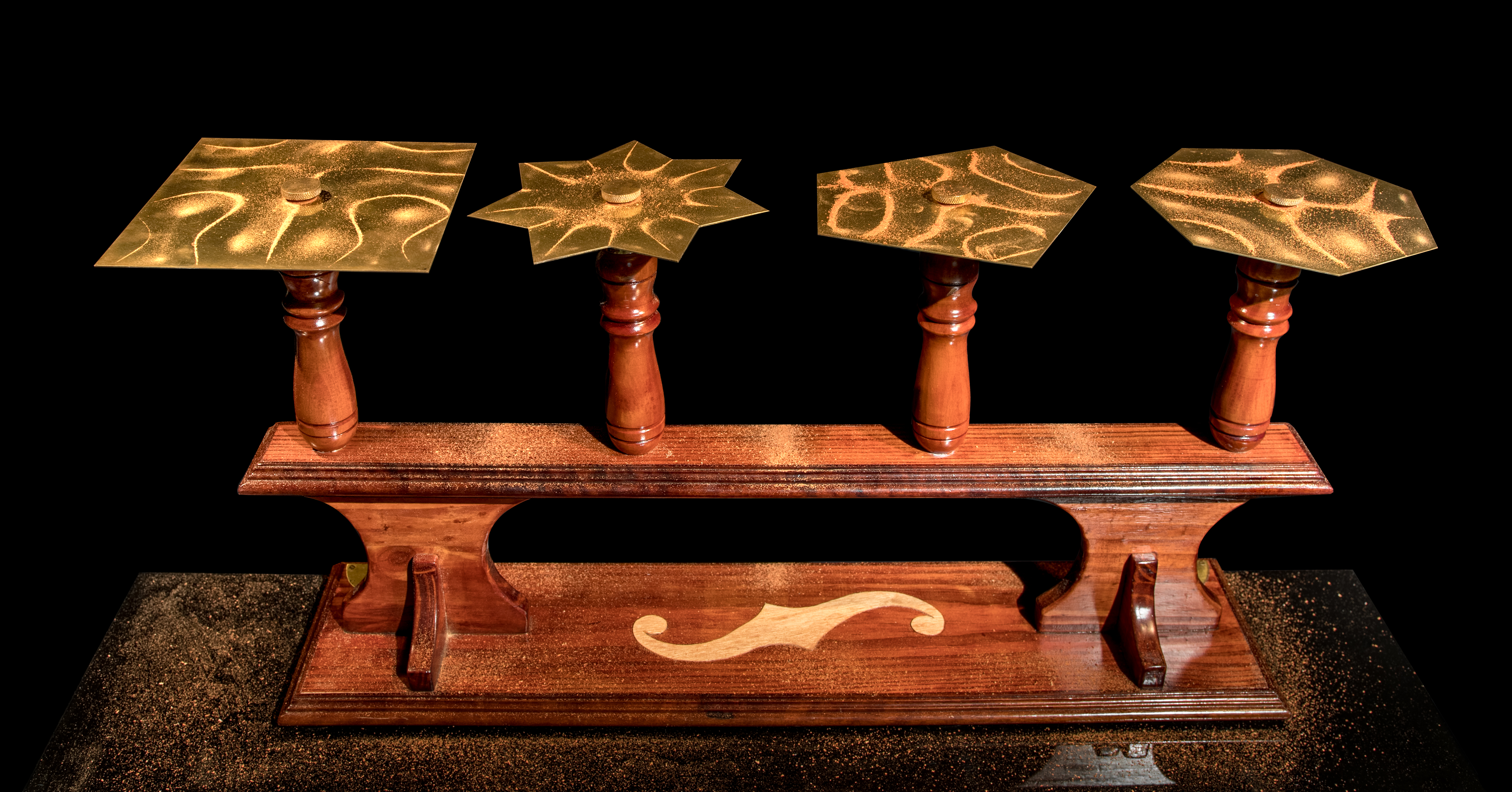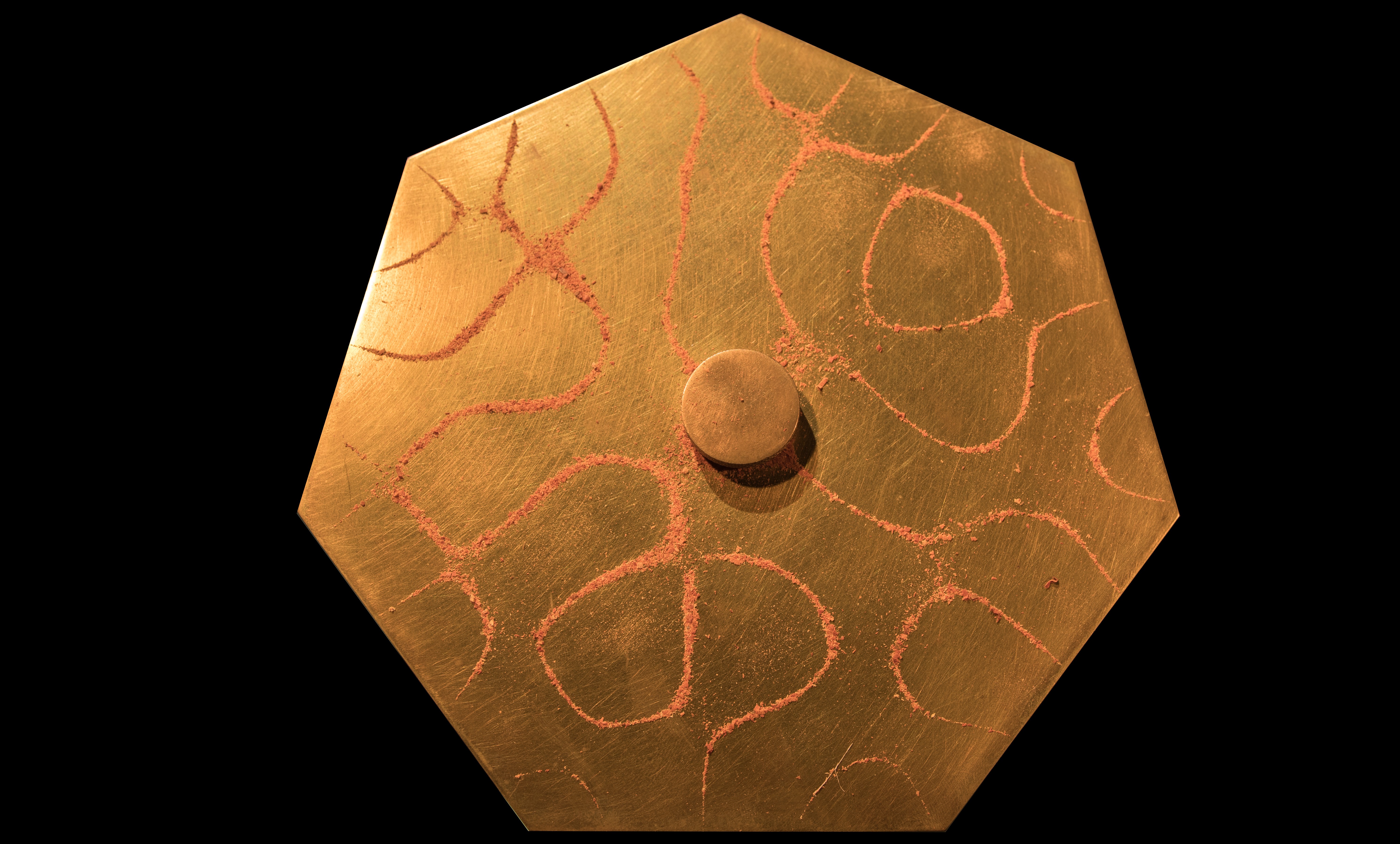CHLADNI PLATES
About 200 years ago, Ernst Florens Friedrich Chladni, from Saxony, experimented on vibrations of rectangular and circular metal plates whose center was kept fixed and with a free contour.

He caused the vibrations with a violin bow and, in order to visualize the different modes of vibration of the plate, he pulverized it with fine sand, which ended up being deposited on the points of the plate that remained stationary during the vibrations (nodal points), forming beautiful figures (figures of Chladni) formed by special lines (the nodal lines).
Napoleon Bonaparte was so intrigued by this experiment that he offered 3,000 francs for the development of a satisfactory mathematical theory of plate vibrations. This award went to Sophie Germain, who modeled the problem with a partial differential equation of order 4. Later, G. R. Kirchhoff gave a more accurate treatment of the boundary conditions of the problem.
An approximate model to describe such vibrations is that of the vibrating membrane, for which the wave equation is used.

Image: Rodrigo Tetsuo Argenton.
